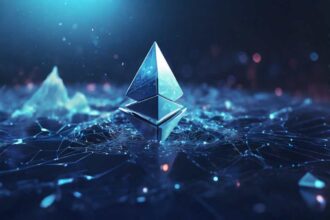If you’re like most people, the term “NFT” probably doesn’t mean much to you. Heck, it might not even sound like a real word. But trust us, NFTs are very real — and they’re about to change the way we think about digital assets forever. NFTs open up a whole new world of possibilities for digital art, gaming, and collectibles. We’re only just beginning to scratch the surface of what’s possible with this technology. So if you’re curious about NFTs but don’t know where to start, this guide is for you!
An NFT or non-fungible token represents a unique digital asset. Unlike cryptocurrencies like Bitcoin, which can be divided and exchanged for other assets, NFTs are one-of-a-kind and cannot be replicated or interchanged. That means each NFT is backed by something special and has intrinsic value that can’t be measured in dollars (or any other currency).
Concept of Fungible vs. Non-fungible Tokens
NFTs, or Non-Fungible Tokens, offer a whole new level of exciting opportunity in the cryptocurrency realm. However, knowing where to begin can be a challenge. That’s why we’re here! What exactly is an NFT? And what sets them apart from other crypto tokens? Let’s break it down and make it crystal clear.
Fungible tokens are literally interchangeable with one another: think about a pile of gold coins — if you mix up the pile, none of them will lose value. Non-fungible tokens don’t work like that; each one is unique and special in its own way. They have special attributes that make them completely original — which is why they are so valuable! Understanding the difference between these two types of tokens is essential for anyone looking to get started in the NFT revolution.
History of NFTs
Non-Fungible Tokens, have only been around for less than a decade with Quantum, a project created in 2014 by digital artist Kevin McCoy on the Namecoin blockchain, widely regarded as the first-ever NFT. Since then, several blockchains have emerged as hubs for enthusiasts to create, buy, and sell NFTs, with Ethereum being the largest NFT blockchain in terms of transaction volume and users. Solana is another blockchain that has quickly established itself as the second-largest NFT chain, with nearly $1.26 billion in trading volume recorded thus far.

The first wave of these digital assets were digital artworks that depicted scarce and collectible items. From there the use of NFTs expanded to include in-game items and tickets for virtual concerts and sports events.
Some of the most popular past NFT sales include Beeple’s Everydays: The First 5000 Days which sold at Christies Auction House in 2021 for nearly $70 million dollars; musician Grimes 2020 album auction which grossed over $6 million; as well as NBA Top Shot packs which made millions for both collectors and basketball teams. Today, Non-Fungible Token technology continues to evolve with new use cases popping up on a continuous basis and many believe it could revolutionize how people buy and sell unique digital assets online.
Difference Between NFTs and Cryptocurrencies
NFTs have been making waves in the crypto space with everyone from well-known industry players to celebrity novices buying and selling digital art, music, and more. So what are these NFTs and how do they differ from cryptocurrency? While both are digital assets backed by blockchain technology, their main distinction lies in their fungibility.
Cryptocurrency like Bitcoin is designed to be fungible meaning that any one unit of it can be swapped for a similar unit without affecting its value. In contrast, the non-fungibility of NFTs means that no two tokens will ever be exactly alike, even if they are of the same type or category. This makes them ideal for situations where uniqueness has a monetary value such as for digital collectibles or rare version gaming items. Therefore, although both can sometimes be traded for fiat currencies (USD, Euro, etc), understanding their distinct properties is key to capitalizing on these burgeoning new markets.
Conclusion
NFTs are an exciting new development in the world of digital assets. While they may seem complex at first glance, understanding the distinction between fungible and non-fungible tokens is an essential first step in grasping their potential. NFTs are unique and one-of-a-kind, making them highly valuable in situations where rarity and individuality are prized. From digital art to gaming items to virtual event tickets, NFTs are already changing the way we think about and interact with digital assets. While NFTs came into mainstream attention in 2021 with projects like the Bored Ape Yacht Club bolstering a newfound meaning of true ownership of digital assets, the sector is poised to disrupt the future of asset authentication and provenance.
NFTs are changing lives every day. 2021 was just the beginning.
Philosophers have long heralded the arrival of the Imagination Age, a successor to the Information Age where creativity is the main driver of economic value. It’s clear that we’re witnessing its dawn in real-time. pic.twitter.com/t6e77evems
— medved (@mattmedved) December 31, 2021
Of course, as with any new technology, there are still many questions and unknowns when it comes to NFTs. But that’s part of what makes them so exciting! We’re only just beginning to see the possibilities of this technology, and the potential for growth and innovation is limitless.
While this blog has provided an introduction to the world of NFTs, read this article for a more in-depth look at this technology, the different types of NFTs, and how to get started with buying your first NFT. With a little research and a lot of curiosity, you never know what you might discover. Who knows — maybe one day you’ll be the proud owner of a one-of-a-kind NFT masterpiece that’s worth millions. It’s all about taking that first step and being open to the possibilities.















